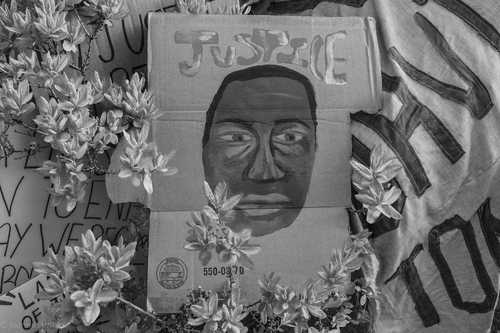Keywords: Demonstrations
Item 149825
Boy Scout signal demonstration group, Portland, 1921
Contributed by: Maine Historical Society/MaineToday Media Date: 1921-04-22 Location: Portland Media: Glass negative
Item 64404
Edwards Manufacturing strike, Augusta, 1980
Contributed by: Maine Historical Society Date: 1980-06-30 Location: Augusta Media: Photographic print
Exhibit
Throughout the history of the state, residents have protested, on paper or in the streets, to increase rights for various groups, to effect social change, to prevent social change, or to let their feelings be known about important issues.
Exhibit
St-Jean-Baptiste Day -- June 24th -- in Lewiston-Auburn was a very public display of ethnic pride for nearly a century. Since about 1830, French Canadians had used St. John the Baptist's birthdate as a demonstration of French-Canadian nationalism.
Site Page
"… to join the festivities, with an opportunity to demonstrate newly formed and established alliances."
Site Page
Presque Isle: The Star City - Potato import protest, Presque Isle, 1982
"… Society Description In a peaceful demonstration of opposition to imported Canadian potatoes, a group of Aroostook County potato farmers…"
Story
Being an NP during social unrest
by Jacqueline P. Fournier
A snapshot of Mainers in a medical crisis of the time/Human experience in Maine.
Story
Black Lives Matter Protest Portland, Maine
by Joanne Arnold
Documenting the signage at Portland Police Station following the BLM Protests of June 2020
Lesson Plan
Nation to Nation: Treaties and Legislation between the Wabanaki Nations and the State of Maine
Grade Level: 9-12
Content Area: Social Studies
This lesson plan asks high school students to think critically about and look closely at documentation regarding the Nation-to-Nation relationship between the Wabanaki Tribes/Nations and the State of Maine. This lesson asks students to participate in discussions about morality and legislative actions over time. Students will gain experience examining and responding to primary and secondary sources by taking a close look at documents relating to the Maine Indian Claims Settlement Act of 1980 (MICSA) and the issues that preceded and have followed the Act.
Lesson Plan
Black History and the History of Slavery in Maine
Grade Level: 6-8, 9-12, Postsecondary
Content Area: Social Studies
This lesson presents an overview of the history of the Black community in Maine and the U.S., including Black people who were enslaved in Maine, Maine’s connections to slavery and the slave trade, a look into the racism and discrimination many Black people in Maine have experienced, and highlights selected histories of Black people, demonstrating the longevity of their experiences and contributions to the community and culture in Maine.
















